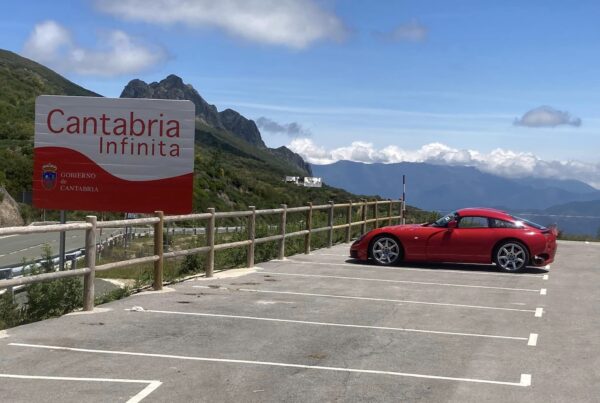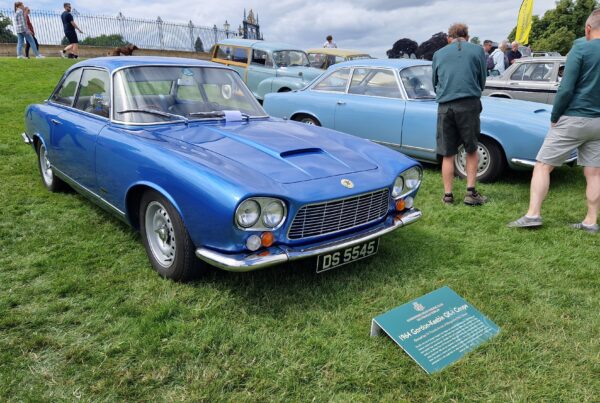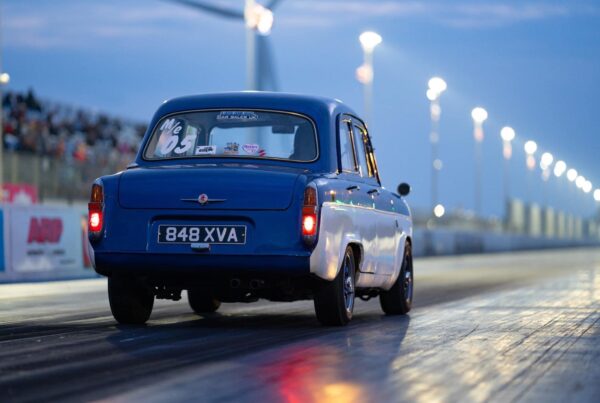”His son told me that on Christmas day each year, it was always a point of discussion as to will it be on the road the next year. With that in my mind on Christmas day 2020 and 2021, I sent him photographs of the progress I had made.
If you attended this year’s Festival of the Dead – The Car Show on Sunday, 2nd July 2023, you couldn’t fail to notice the stunning 1950 Lea-Francis 2 ½ Litre Sports. Picked as the very deserving winner of the “Best in Show” trophy, there is more to this 50s classic car than meets the eye. Barry Dunkerley tells us how this dilapidated Lea-Francis went from a trailer of parts to show winner in 16 months.
A brief history of Lea-Francis
Lea-Francis is credited with manufacturing Britain’s first supercharged production car. But despite this powerful claim to fame, this British classic car marques’ breakthrough into automobile production wasn’t always a smooth ride. Lea-Francis emerged to the market in 1895 with their sophisticated bicycles, followed by a motorcycle range from 1912 to 1924. However, their first motorcar attempt in 1903 did not sell well. Success came by way of the supercharged ‘Hyper’ in 1927, albeit short lived. Sadly, progression was dampened by the Great Depression and the company went into receivership in the early 1930s.
The Coventry based marque turned a corner in 1937 under new management and with a new car designed by former Riley hand, Hugh Rose, and from here, Lea-Francis went on to produce a popular range of saloons and sports cars until 1962.
The Lea-Francis jigsaw puzzle
With the boredom of the Covid lockdowns of 2020 setting in, Barry, a retired craft, design and technology teacher, was looking for a project to keep his hands and mind occupied. After spotting an advert for a Lea Francis 2.5 litre sports 1950 that had been taken apart back in the late 1960’s and was still in bits, Barry made the phone call and headed off to Lancashire with a large trailer (and a mask on) to view the car.
The 2.5 Litre Sports model was produced from 1949 to 1953 and with only around 75 ever made, it must have been a golden moment to find one that is unrestored…
“Looking at what was offered, I can sum it up as quite simply as a very large jigsaw puzzle with a certainty that there were a lot of pieces missing!”, Barry tells us.
Did Barry want the Challenge?
Well, there was a rolling chassis, a pile of outer panels, two engines in bits, and 5 gearboxes in bits. No interior at all or hood or floor. “I fell to the idea as I didn’t know these cars at all, and the picture seen on the ‘net looked very interesting. The person who had owned it had done some good work on the panels but had passed away before realising his dream of it on the road and it was his son that I purchased it from”, he says.
Driving home that day with a loaded trailer, Barry reflected on remains of a project which he had just purchased. But despite its dilapidated condition, this Lea-Francis was far from unloved.
The car purchased on a whim by the previous owner in a partly dismantled state in 1968. As the custodian was busy raising a family and working, it never got his full attention. He did however completely strip it down, throwing away all the floor sections and all the interiors.
”His son told me that on Christmas day each year at the dinner table it was always a point of discussion as to will it be on the road the next year. With that in my mind on Christmas day 2020 and 2021, I sent him photographs of the progress I had made.
Building the LeaF
The next few days were like being at a car spares jumble. Trying to identify what was what and with so many mechanical, engine and gearbox pieces, it was a challenge.
The logical place to start was to begin assembling the engine parts to see if everything was there to build a “good one”. Next, the gearboxes – yes, all five, plus two overdrive units and lots of gears of various shapes and sizes. Eventually with the mill sat in the chassis, Barry managed to fire up the engine and hear it running momentarily.
Around this time, Barry took a call from fellow Lea-Francis club member, Max Dutton, who was also rebuilding a 2 ½ Litre. Max had the old rusty floor/interior panels that would serve as patterns for Barry’s project. In addition, Max provided Barry with a file of photographs of his strip down and reassembly – fantastic reference material!
”So armed with these bits, I started to fold up the sheets of Zintec steel for the floor and rear sections, followed by assembly and spot welding. Fitting the panels was a challenge to get any resemblance of decent gaps, and making new wooden door frames was a pleasant change from the metalwork. When at last I had the bodywork in the shape I wanted it, I took off all the panels and removed the body tub. This was then turned on its side so all seams could be seam sealed and then etch primed before painting and finally stone guarded. I could then turn it back ready for painting.
Once the panels and tub were painted in British Racing Green, Barry removed the engine, stripped the chassis for blasting and refinishing, and restored the suspension.
Turning his attentions back to the engine, Barry wanted to fit a gearbox with overdrive so set about trying to make one up from the pile of bits. “I don’t know exactly what model gearboxes I have, but I managed to build one up… I shortened the prop to match, and as I hadn’t yet fabricated the gearbox tunnel, it wasn’t much to alter the floor to accept it”, Barry tells us.
The wiring loom required consideration and modification. Having no details of the floor near the pedals, and not wanting the petrol pipe coming up just inside the bulkhead with the wiring loom next to it, Barry opted to locate the wiring loom on the nearside where there were less obstructions. “I also wanted to make some modifications. The main one being to relay all the switching from the steering wheel to reduce the current being carried on those switches. This would also allow me to reduce the size of cable in the steering column. I laid out some scaffold boards with nails in marking the various positions on the car and with the appropriate cloth cable made up the loom”, Barry says.
From here, the finishing touches were added. Chrome parts were sent off for replating, the original instruments were refurbished, and grey leather interior was recreated from photographs.
The first drive
16 months later and the 1950 Lea-Francis was back on the road after 55 years in bits! The first few runs encountered various issues, as is to be expected. Problems included a coil breaking down when it got too hot, and a coating applied to the inside of the fuel tank at some point in the past peeled off, causing fuel blockages.
Gradually the trips got longer, and confidence grew. Barry’s first long run out was to Festival of the Dead in July 2023 where he was awarded the prestigious “Best in Show” trophy. What an achievement and incredible journey for this 70+ year old vehicle!

Barry Dunkerley, thank you very much for taking the time to talk to us. We wish you a great summer motoring season.
For specialist insurance for your Lea-Francis or for any other classic car, contact ClassicLine Insurance on 01455 639 000 or find out more here.



















